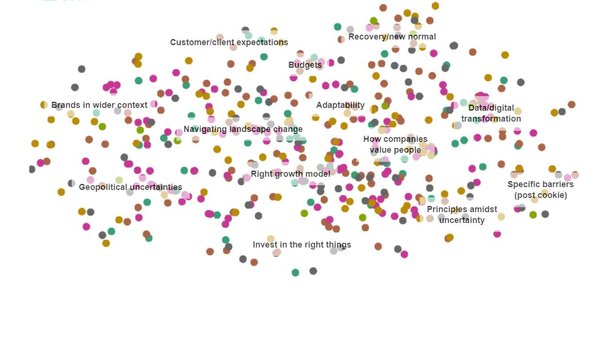Researchers unveil new narrative method for creativity training /
A new method for teaching creativity, developed out of Ohio State University, promises more resilient, more transformative thinking
James Swift
/
Researchers have proposed a new method for teaching creativity that they claim is better suited to volatile environments and could yield bigger leaps in innovation.
The new method is rooted in narratives rather than the divergent thinking that dominates creativity training within higher education, business and government today.
Divergent thinking exercises memory and the ability to create logical connections, and it treats creativity like a computational process that responds to data.
In a paper published last week, Angus Fletcher and Mike Benveniste of Ohio State University’s Project Narrative argue that while this computational approach has helped demystify creativity and produced tangible gains, it is incomplete and has resulted in less innovation and growth than expected.
It has also, they say, produced a paradox: children are generally thought to be more imaginatively creative than adults and yet they underperform their elders in divergent thinking tasks.
Fletcher and Benveniste’s new method of teaching creativity is based on narrative cognition, a non-computational (but still mechanical and therefore teachable) process that they believe it fills the gaps and inconsistencies in divergent thinking.
Narrative cognition describes how people imagine causes and effects to conceive new actions. It is neither new nor obscure, but the creativity research community’s infatuation with divergent thinking has left it on the sidelines. Fletcher and Benveniste are giving it a role upfront, in the generative phase of creativity exercises.
Their narrative method asks participants to generate stories based on hypothetical situations or think from someone else’s perspective. Their suggestions are then assessed by expert panels according to how certain they are that an action will work.
For instance, marketers might be asked to imagine a world where their competitor’s product was free and how they would respond to that, or to learn a little about how a co-worker thinks and then imagine how they would solve a specific problem.
Fletcher and Benveniste say that because narrative cognition originated with the evolution of the neuron, which allowed early animal life to experiment with new behaviours for finding food and avoiding danger, it ‘tends toward useful outcomes without requiring an explicit emphasis on utility’.
Put another way, the narrative method generates practical solutions without pressuring participants to come up with ideas that match an ‘appropriateness’ criteria.
What’s more, the narrative method doesn’t rely on data to fuel outputs, so it’s useful even in never-seen-before situations and more likely to beget transformative, rather than iterative, leaps in thinking.
Fletcher and Benveniste have used the narrative method to train military officers, graduate students and corporate executives at Fortune 500 companies. And while it is still in its infancy, they believe narrative methods could provide ‘a direct path to increasing the creative production of business plans, technological mechanics, military strategies, marketing campaigns, political platforms, novels and films.’
‘None of these new narrative techniques invalidate [JP] Guilford's 70-year-old curriculum of divergent thinking or its use of semantic, pattern-driven methods, such as association, transposition, conceptual blending, metaphor, extension, and redefinition,’ wrote Fletcher and Benveniste. ‘They simply address the empirical finding that creativity can extend beyond computation into the action-based neural processes that evolved to help animal life adapt to the uncertainty and volatility of contested domains.’
Want more of the same? /
We don’t just write about best-in-class campaigns, interviews and trends. Our Members also receive access to briefings, online training, webinars, live events and much more.






